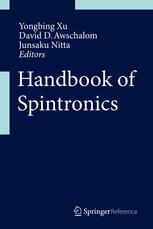

Most ebook files are in PDF format, so you can easily read them using various software such as Foxit Reader or directly on the Google Chrome browser.
Some ebook files are released by publishers in other formats such as .awz, .mobi, .epub, .fb2, etc. You may need to install specific software to read these formats on mobile/PC, such as Calibre.
Please read the tutorial at this link: https://ebookbell.com/faq
We offer FREE conversion to the popular formats you request; however, this may take some time. Therefore, right after payment, please email us, and we will try to provide the service as quickly as possible.
For some exceptional file formats or broken links (if any), please refrain from opening any disputes. Instead, email us first, and we will try to assist within a maximum of 6 hours.
EbookBell Team

4.7
106 reviewsThis large reference work addresses a broad range of topics covering various aspects of spintronics science and technology, ranging from fundamental physics through materials properties and processing to established and emerging device technology and applications. It comprises a collection of chapters from a large international team of leading researchers across academia and industry, providing readers with an up-to-date and comprehensive review of this dynamic field of research.
The opening chapters focus on the fundamental physical principles of spintronics in metals and semiconductors, including the theory of giant magnetoresistance and an introduction to spin quantum computing. Materials systems are then considered, with sections on metallic thin films and multilayers, magnetic tunnelling structures, hybrid materials including Heusler compounds, magnetic semiconductors, molecular spintronic materials, carbon nanotubes and graphene. A separate section describes the various methods used in the characterisation of spintronics materials, including spin-polarised photoemission, x-ray diffraction techniques and spin-polarised SEM.
The third and final part of the Handbook contains chapters on spintronic device technology and applications, including spin valves, GMR and MTJ devices, MRAM technology, spin transistors and spin logic devices, spin torque devices, spin pumping and spin dynamics, and thermal effects in spintronics.
Each chapter builds from the fundamentals through to the state-of-the-art, also considering the challenges faced by researchers and containing some indication of the direction that future work in the field is likely to take. This reference work will be an essential and long-standing resource for the spintronics community, whether in academic or industrial research.